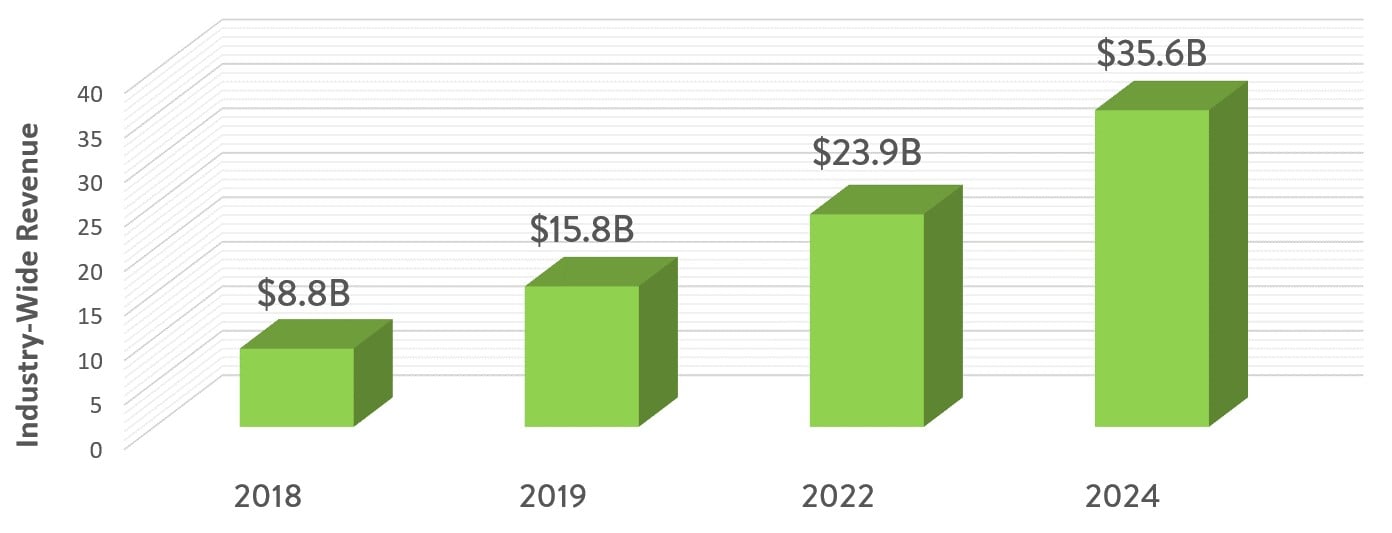
Over the past decade, the additive manufacturing industry has seen an explosion of technological innovations that have transformed 3D Printing technology from a futuristic abstraction to an economically viable reality. However, despite having developed into a growing multi-billion dollar industry, there are still several challenges that face 3D printer manufacturers, developers, and ultimately consumers. And while their potential has become so commonly discussed in science and technology forums, several misconceptions remain.
Wohlers Associates, Inc. is an independent consulting firm with an exclusive focus on additive manufacturing trends and developments. Often revered as an authority on all things 3D, their latest report in 2019 forecasts $15.8 billion for all additive manufacturing products and services worldwide. A figure that is predicted to climb to $35.6 billion by 2024.1 These figures, while still very insightful, refer to the 3D printing market as a whole and don’t specify which types of printers are bringing in the most revenue.
To make sense of this we have to separate 3D printers into their two most common categories: Fused Deposition Modeling (FDM) and Selective Laser Sintering (SLS). When people talk about 3D printing they’re most often referring to FDM printers which operate by heating a thermoplastic filament (wire) to its melting point and then extruding it layer by layer to create a 3D object. These printers are the cheapest and most commonly available type of 3D printers but they can typically only print plastics. While these printers are great for printing small trinkets and models, they have critical limitations on strength and as such are not well suited for industrial applications. SLS printers on the other hand, operate by firing a high intensity laser onto a bed of powdered material where the material is then sintered layer by layer into a 3D object. Because virtually any industrial material can be sintered, you can print precise industrial strength components with most metals and polymers. Although these printers are far more useful they are often extremely expensive, large, and slow.
Now that we understand the distinction between these two types of printers we can break down the evaluation. As of July 2018, FDM printers composed roughly 46% of the 3D printing market share which draws a stark contrast to the 38% occupied by SLS technologies.2 This figure is especially interesting because over the past two years, lower end FDM printers (<$5,000) have seen a significant decline in annual growth which indicates that the market share has also declined since summer of 2018. Furthermore, metal 3D printing (DMLS) which is an application of SLS technologies has seen an annual growth rate of more than 40% over the past six years which indicates that their market share has increased.1 As such by 2024, SLS printers are expected to occupy much larger than 38% of the $35.6 billion dollar industry. There has never been a better time to invest.
When trying to buy an FDM printer online you may notice that the market is fairly saturated with an abundance of manufacturers at virtually every price point. This is not the case with SLS printers as the technology has only recently been refined to the point where it can be sold at a reasonable price. At the moment there are only a handful of SLS providers with very little continuity in price. The more expensive printers are typically refrigerator sized with extremely slow print speeds and the lower end printers don’t print with the definition that is required for most professional work. This is because every SLS printer to date has fundamental issues pertaining to beam guidance that limit the speed and resolution that can be achieved. So how can we close the price gap?
That’s where we come in! At Tecnica we have developed an entirely redesigned Galvanometer-Free Optics system that has enabled us to make our SLS printers faster, more precise, and more reliable at a cost that blows away the competition.3 The unprecedented market growth in combination with our groundbreaking technology creates a very unique investment opportunity. Soon SLS printing will dominate the ever expanding 3D market; don’t be last. Join us now.
References:






